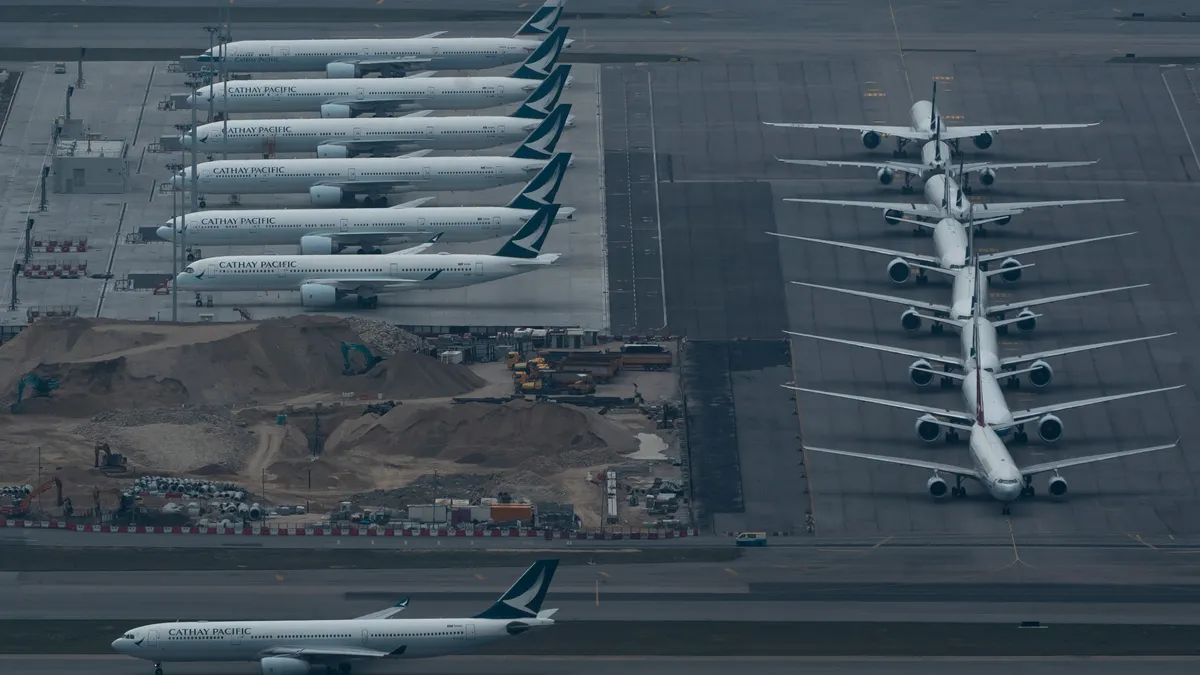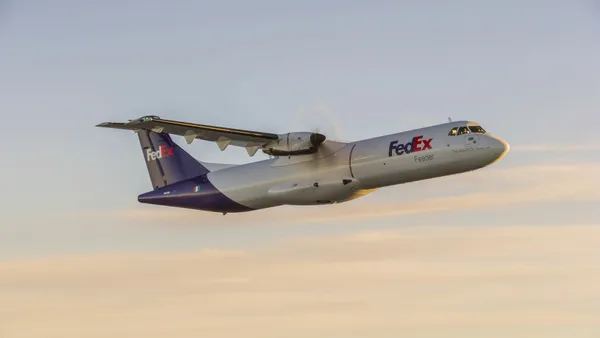Dive Brief:
- Transit times at a Hong Kong International Airport cargo terminal "are likely to extend by an average of 2 to 3 days" due to quarantine rules stemming from a positive COVID-19 case, Flexport said last week.
- Workforce capacity at Hong Kong Air Cargo Terminals, known as HACTL, will be reduced by around 25% until the end of October, according to an update by Everstream Analytics. "Both import and export cargo are likely to be significantly delayed and congestion issues are likely to occur," the update said.
- HACTL said in a press release that a fully vaccinated employee "preliminarily tested positive" for COVID-19 on Oct. 7. The terminal added it is working to identify close contacts and that only employees who have tested negative will be allowed to return to work.
Dive Insight:
Any slowdown at a Hong Kong International Airport terminal will have an outsize impact on air cargo operations in the region. It handled the most international freight among airports in 2019 and 2020, according to Airports Council International, and HACTL is the only one of its five terminals with no affiliation to a specific carrier.
The airport's sizable cargo handling abilities allow shippers to divert volume there if another terminal in the region experiences delays. This happened following freighter suspensions at Shanghai Pudong International Airport Cargo Terminal in August, with Flexport trucking much of its clients' cargo to Hong Kong to avoid delays. According to C.H. Robinson, air capacity out of Shanghai is slowly returning.
Air freight services out of Hong Kong were already experiencing high demand and extended transit times in September, according to Flexport. A quarter of the HACTL terminal's staff being sent home for quarantine will further stress the ground handling situation at China's airports, DB Schenker said in a customer advisory.
"In addition, major air cargo flights are either arriving or departing empty due to stringent COVID-19 regulations which are impacting the turnaround times of the flights," it said.
The expected slowdown brings another challenge for shippers, who already face limited capacity and high spot rates trying to move freight from Asia into the U.S. for the holiday season. Maersk said in September it is leaning more on "secondary airports to help overcome COVID-19 related airport restrictions," but capacity and rate issues are expected to stick around through the end of the year.
"New technical product launches and winter fashion products together with continued ocean freight disruption are expected to push demand higher even as capacity has yet to return to pre-COVID levels," Maersk said of air freight. "Rate levels, already at all-time highs, are set to increase further in Q4. Most of the major trade lanes such as transpacific, Asia-Europe and transatlantic will be impacted."














